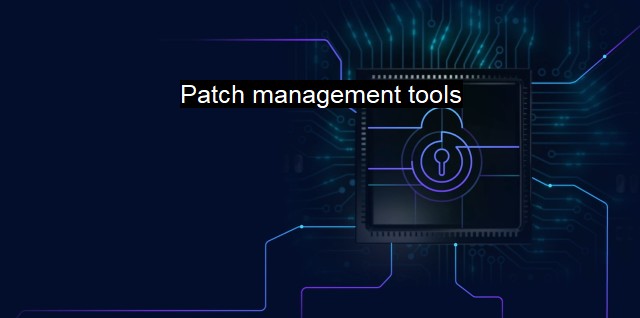What are Patch management tools?
The Role of Patch Management Tools in Mitigating Cybersecurity Risks: An Introduction to Importance and Functions
Patch management tools form an integral aspect of cybersecurity strategy in enterprises of all sizes worldwide. these indispensable software-based protocols aim to provide an effective defense against cyber attacks by automating the detection and neutralization of software vulnerabilities.The complexities of cybersecurity demand that adaptive and preventive steps are continually taken to mitigate risks, some of which can potentially wreak havoc and disrupt operations. Underlining this need for prophylactic measures is the fact that threats often emanate from software vulnerabilities. These weak spots predominantly signify outdated or obsolete security frameworks that hackers gleefully exploit to manipulate or steal sensitive data, interrupt processes, or perpetrate other malicious acts. As such, patch management tools provide a much-needed buffer by ensuring those vulnerabilities are instantly detected and resolved.
The term 'patch' in this context refers to a piece of software designed to update, fix bugs, or improve a computer program or its supporting data, including fixing security vulnerabilities and other bugs. Patch management, therefore, involves the systematic monitoring, identification, deployment, installation, and validation of latest software patches to ensure all relevant systems are adequately protected.
Patch management tools accomplish this significant responsibility through several steps. To start, the patch scanning feature identifies the software applications currently available in an enterprise. It subsequently checks the software against a database containing the latest software version details. This enables the identification of those applications that are outdated and require patching. Once detected, specific patches corresponding to the outdated software are accessed. They are subsequently installed to upgrade said software, effectively sealing security vulnerabilities that may exist.
In terms of pure functionality, patch management tools prove invaluable as they automatically identify and neutralize vulnerabilities, negating the necessity for manual checks that might be ineffective due to subjectivity and the potential for human error. The automation thus provided saves time and resources, enabling IT teams to focus their efforts on other crucial tasks within the cybersecurity landscape.
Effective patch management is not merely about automation. Not all patches are created equal. Some may prove incompatible with existing software configurations or fail to address specific vulnerabilities relevant to an organization's operations. Automated patch management tools may also pose difficulties in prioritizing which patches should be applied and in what order, based on their potential impact. Security threats that are of higher urgency may need immediate addressal, and having a patch management tool infused with AI solutions can vastly help in these scenarios.
All said, amid the proliferation of cyber threats, patch management tools are becoming increasingly recognized as a prerequisite for robust cybersecurity architecture. These versatile, technology-driven resources foster secure, seamless, and uninterrupted operations while keeping pace with evolving cybersecurity standards.
While advanced patch management tools protect against potential cyber attacks, they are unlikely to be sufficient alone. The cyber threats posed today are complex and ever-evolving, necessitating multilayered security measures. when mated with firewalls, antivirus software, intrusion detection systems, and other cybersecurity defenses, patch management tools can significantly strengthen a company's cybersecurity infrastructure and its ability to confidently navigate the complex and treacherous terrain.
Patch management software bridges critical vulnerabilities in programs and applications while improving performance and functionality. Its emphasis on automation increases accuracy and saves time, making it instrumental within the larger cybersecurity infrastructure. While it may not provide a complete solution on its own, it is a resourceful tool that contributes significantly to strengthening an organization's security stance and implementing a comprehensive defense system.

Patch management tools FAQs
What is a patch management tool?
A patch management tool is a software program used to automate the process of updating, managing and deploying patches across different systems and applications. These tools help to ensure that all software and systems are up-to-date, secure and protected against known vulnerabilities.Why is patch management important for cybersecurity?
Patch management is crucial for cybersecurity because it helps to ensure that software and systems are protected against known security vulnerabilities. Cybercriminals often exploit vulnerabilities in software to gain unauthorized access to systems and steal sensitive data. By regularly updating and patching software and systems, organizations can minimize the risk of cyber attacks and protect against potential data breaches.What are some common features of patch management tools?
Some common features of patch management tools include automated patch deployment, patch scheduling, vulnerability scanning, reporting, and auditing. These tools also often integrate with other security solutions such as antivirus software to provide comprehensive protection against cyber threats.How can patch management tools benefit an organization's antivirus strategy?
Patch management tools can benefit an organization's antivirus strategy by ensuring that software and systems are updated and patched with the latest security updates. Antivirus software often relies on these updates to detect and block new threats. By regularly updating software and systems, organizations can ensure that their antivirus software is up-to-date and able to provide effective protection against the latest cyber threats.| | A | | | B | | | C | | | D | | | E | | | F | | | G | | | H | | | I | | | J | | | K | | | L | | | M | |
| | N | | | O | | | P | | | Q | | | R | | | S | | | T | | | U | | | V | | | W | | | X | | | Y | | | Z | |
| | 1 | | | 2 | | | 3 | | | 4 | | | 7 | | | 8 | | |||||||